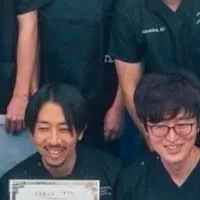
Abbott Makes Significant Progress with Innovative TAVI System for Aortic Stenosis Treatment
Abbott Takes a Leap Forward with Its TAVI System for Aortic Stenosis
Abbott has recently taken a significant step in the field of heart valve treatment by announcing the initiation of patient procedures involving its investigational transcatheter aortic valve implantation (TAVI) system. This innovative approach is specifically aimed at addressing symptomatic severe aortic stenosis, a life-threatening condition impacting many older adults.
The aortic valve's primary function is to regulate the flow of oxygen-rich blood throughout the body. With aging, calcium tends to accumulate in the valve, leading to a narrowing known as aortic stenosis. This condition forces the heart to exert more effort to pump blood, resulting in severe symptoms such as chest pain, shortness of breath, and, in extreme cases, fainting. If left untreated, aortic stenosis could weaken the heart and might be life-threatening. It notably impacts about 9% of individuals aged over 80, marking it as the most common primary valve disorder among the elderly population.
The newly developed TAVI system is a type of balloon-expandable device that simplifies the valve replacement procedure. In essence, the new heart valve is crimped onto a deflated balloon, inserted through an artery in the leg, and guided into place within the heart. Doctors then inflate the balloon to expand the valve and take over the function of the patient's narrowed existing valve, after which the balloon is deflated and removed from the body.
Dr. Azeem Latib, a prominent figure in cardiology and the director of structural heart interventions at Montefiore Health System, emphasized the long-standing benefits of TAVI treatment. He stated, "Transcatheter aortic valve implantation treatment has greatly aided both physicians and patients. However, it has become clear that a single device does not suit the diverse needs of all patients with aortic stenosis."
The introduction of Abbott’s investigational TAVI system is particularly timely, as there is a continuing need to diversify treatment options for aortic stenosis patients. With advancements in technology and insights derived from the experiences of physicians, Abbott aims to create a foundation for future developments in artificial intelligence (AI)-guided procedural capabilities. The goal is to enhance ease of use and precision in these vital procedures while also ensuring optimal performance in blood flow through the valve.
Sandra Lesenfants, Abbott’s senior vice president for the structural heart business, remarked, "Abbott's extensive experience in the TAVI field equips us with valuable knowledge about unfulfilled needs within the market. We’re committed to using this expertise to develop future therapies that can better serve patients’ needs."
The initial procedures employing this investigational TAVI device were successfully conducted at the Republican Centre of Emergency Medicine in Tashkent, Uzbekistan. This was during a collaborative effort with local cardiology expert Dr. Saidamir Djafarov, who served as the principal investigator for this milestone study. The endeavor marks a promising step forward in expanding Abbott's structural heart portfolio and is aimed at delivering enhanced care options to patients living with severe aortic stenosis.
In conclusion, Abbott's commitment to research and development in heart valve technology not only exemplifies industry leadership but also sheds light on the evolving landscape of patient care for those affected by serious cardiovascular conditions. As clinical trials progress, the potential for this cutting-edge TAVI system to transform patient treatment is a hopeful prospect for both healthcare providers and patients alike.
Topics Health)










【About Using Articles】
You can freely use the title and article content by linking to the page where the article is posted.
※ Images cannot be used.
【About Links】
Links are free to use.